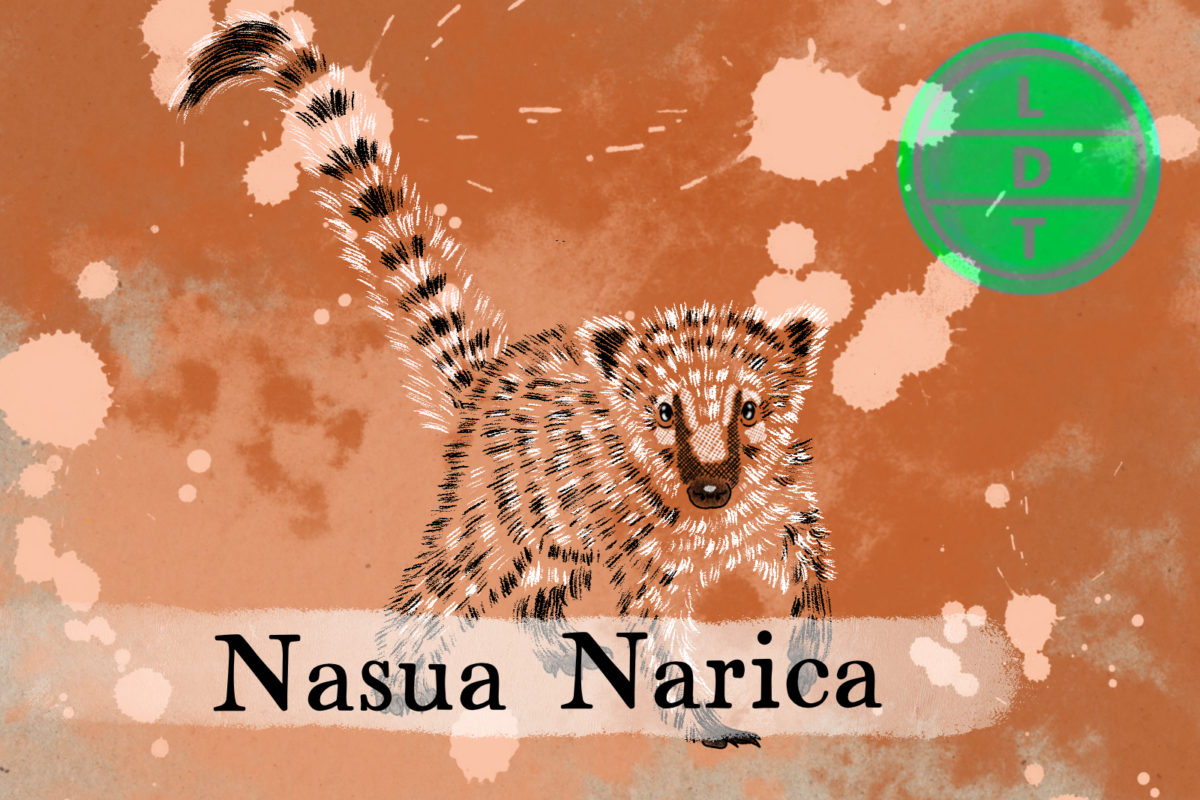“…and today we’re talking about a rainforest weasel. But more on that later.”
It seems that, no matter where you live, you have to deal with mosquitoes. Whether you’re in the Alaskan mountains or the jungles of Panama, biting boys are everywhere. Long ago, the white nosed coati said “enough is enough” and found an ingenious way to keep those blood suckers at bay. It may not necessarily be life saving, but it is a great way to not let the bugs drive you crazy here in Life, Death, and Taxonomy.
Description of the Coati
Coatis have long tails that they hold aloft while moving. When footage of them running is played in reverse, they look like little dinosaurs, earning them internet fame.
Their color ranges from light to dark brown, depending on the species, with lighter facial markings.
Coatis measure around 70 centimeters from the nose to the base of the tail, and their tail is roughly as long as their body.
Measure Up
Length
- 33–70 centimeters (13–28 inches)
- How many thicknesses of a coat of car paint go into the length of a coati?
- Hint: Coats of paint are measured in mils which are about 0.001 inches or 25.4 microns. When you are painting exterior buildings, you are aiming for 4 to 6 mils per coat.
- 3,733.33 coats of car paint.
Weight
- 3-8 kilos (6.6-17.6 pounds)
- How many WWII American jump boots go into the weight of a coati?
- Hint: Jump boots were the boots worn by paratroopers, specifically the 101st Airborne Division and the 82nd Airborne Division.
- 4.4 boots. Recreations of the boots are around 4 pounds.
Fast Facts about the Coati
Habitat and Range
Coatis inhabit diverse environments, including hot and arid areas, cold mountain slopes, tropical rainforests, and grasslands.
They are native to South and Central America, Mexico, and the southern United States.
Diet and Foraging
Coatis are omnivorous, feeding on fruit, invertebrates, small vertebrates, and eggs. They have an excellent sense of smell and agile paws, which allows them to forage for food in their surroundings.
Social Behavior
Coatis are social animals that travel in groups.These bands consist of females and younger males.
Once males reach maturity (around 2 years old), they live alone and rejoin the group only for mating.
Name Origin
The name “coatimundi” comes from the Tupian language, indigenous to South America. It combines “cua” (meaning “belt”) and “tim” (meaning “nose”), referring to the way coatis sleep with their nose tucked into their belly.
All-Terrain Foragers
Coatis are agile climbers, equipped with powerful claws, swiveling ankles, and a long tail for balance.
They can run at speeds of up to 24 kilometers per hour (15 miles per hour) and are skilled at descending trees quickly.
Major Fact: Insect Repellant
Coatis from Panama are known to rub their own fur and that of other troop members with resin from Trattinnickia aspera (Burseraceae) trees, but its purpose is unclear. Some proposed possibilities are it serves as an insect repellent, a fungicide, or as a form of scent-marking.
The method behind this behavior lies in the plants’ chemical composition. Many citrus fruits, for example, contain compounds like limonene, which have insect-repellent properties. Similarly, certain herbs like basil or mint produce aromatic oils that insects find unpleasant or even toxic.
By rubbing themselves with these plants, coatis effectively create a shield against mosquitoes, ticks, and other pesky bugs.
This behavior showcases the coatis’ remarkable adaptation to their environment. Living in tropical forests where insects are abundant and often carry diseases, having a natural defense mechanism against them is invaluable. It not only helps them stay comfortable but also aids in reducing the risk of insect-borne illnesses.
Moreover, this behavior highlights the coatis’ intelligence and ability to utilize their surroundings to their advantage. By harnessing the power of nature’s insect repellents, coatis demonstrate a sophisticated understanding of their environment and how to thrive within it. It’s a testament to the ingenuity of these fascinating creatures and their remarkable adaptations for survival in the wild.
Ending: So be a loner, eat some bugs, and rub your friends with tree resin to keep the skeets away like the coati here in LDT.

